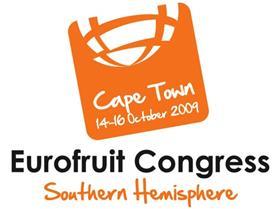
Branding, direct sourcing, dealing with discount retailers and expansion into new, emerging markets are among the main topics for discussion at this year’s Eurofruit Congress Southern Hemisphere, the leading conference event for the Southern Hemisphere fresh produce business, which began yesterday at the NH Lord Charles Hotel in Cape Town, South Africa.
A number of high-profile speakers are on hand to discuss issues of importance to Southern Hemisphere fresh produce exporters as they seek to increase their sales to key markets around the world, including Europe. Sandy Norman of Tesco, who currently heads up the food retailer’s South African technical hub operation, will talk about his recent work to shorten the group’s supply chain for fresh produce as part of an overall strategy to move closer to producers.
Meanwhile, members of the South African export trade – including Louis Kriel Jr of Capespan and Malcolm Dodd of the Fresh Produce Exporters Forum – will focus on the opportunities for developing export brands, innovation in the supply chain and creating new demand in untapped markets.
Luca Granata of Italian apple consortium Melinda will join Raquel Herce of Madrid-based agency Agr!Agro and Peter Dall of Pink Lady to look more closely at how suppliers can develop successful consumer branding, while Ed Garner of TNS Worldpanel, Peter Durose of Poles Apart Consulting and Pieter du Toit of Dutoit Group will give their insight into the changing face of food retail in the wake of the economic downturn.
“The Eurofruit Congress Southern Hemisphere continues to provide the perfect setting to meet up, share information and do business,” commented Mike Knowles, editor of event organiser Eurofruit Magazine. “We’re going to focus on a range of subjects that are vitally important to today’s business as well as to its future prosperity.”
South Africa remains a supplier of key importance to many fresh produce markets in Europe, but its focus has also become more global in recent years as new opportunities have arisen in Asia and North America, where buyers and markets for South Africa’s products are gaining in number each and every year.






No comments yet